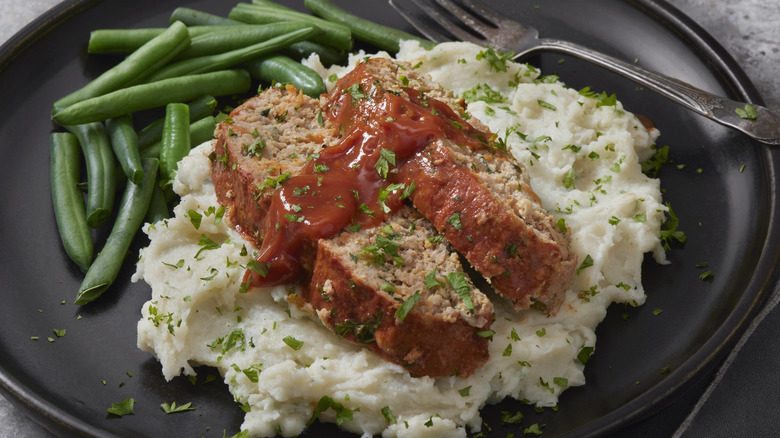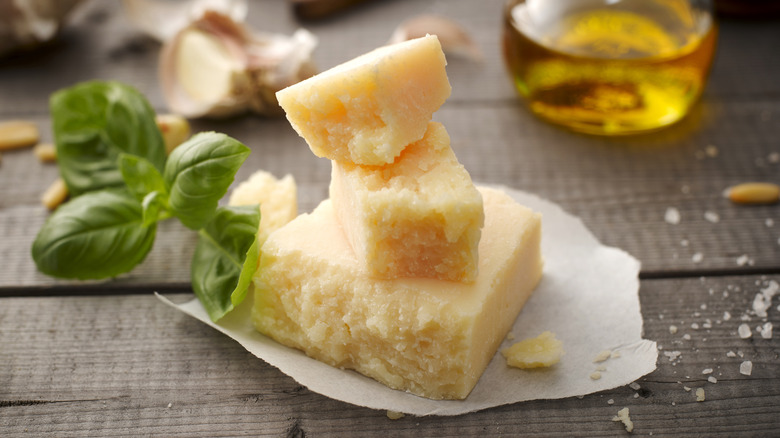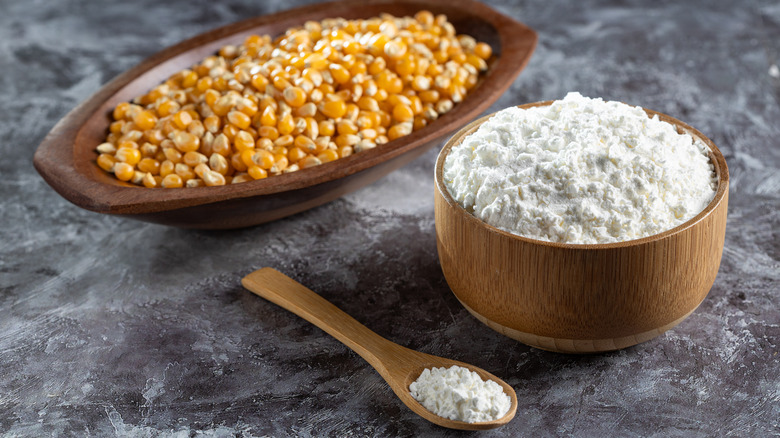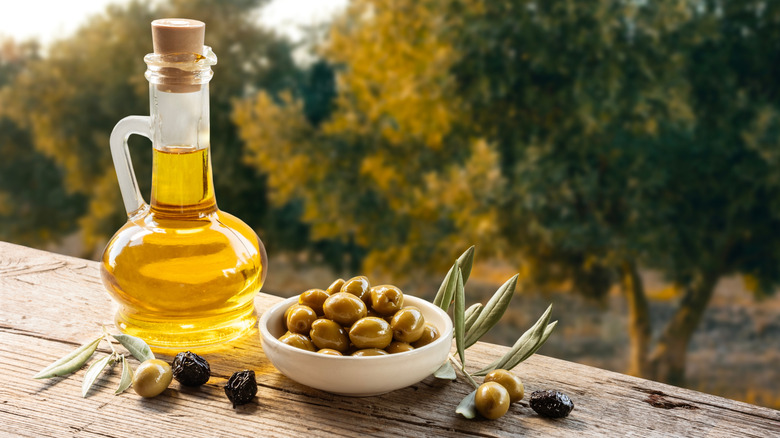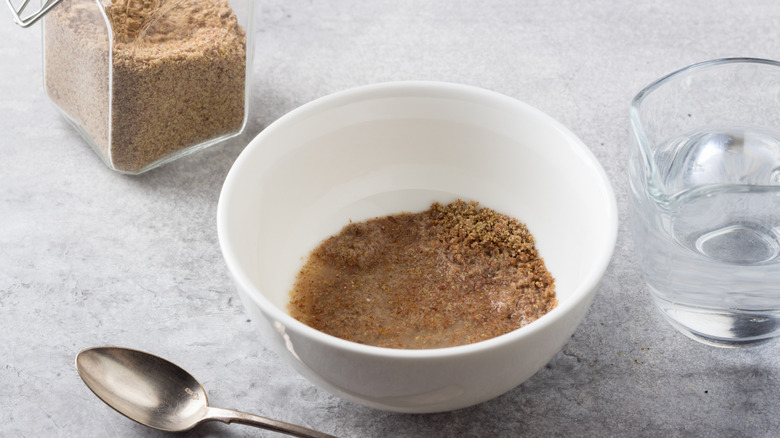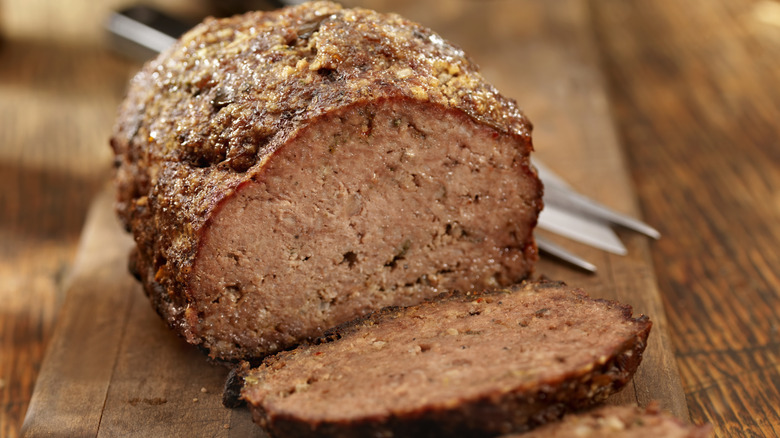6 Ways To Make Meatloaf Without Using Eggs
Meatloaf is a classic dish that is fairly easy to whip together without complicated ingredients or assembly. But as with all recipes, your meatloaf base can be easily modified. In the case of making meatloaf without eggs, not only can they be easily substituted, but you can do so while keeping the flavor and texture of your meatloaf top of the line.
The primary function of eggs in meatloaf is to act as a binding agent that helps the other ingredients stick together while maintaining moisture. Yet, while using no eggs seems like the biggest mistake that would lead to dry meatloaf, you must realize one key thing: It's not about the egg itself, but about what it does. Removing the eggs simply means finding another binding agent to take its place, something that not only helps navigate dietary restrictions but opens up the door to more flavorful meatloaves. There are plenty of pantry staples you can use to maintain the integrity and taste of a basic meatloaf recipe, all while expanding the horizons of this classic dish.
Replace eggs with parmesan cheese
Apart from being a binding agent, eggs also add a bit of protein to your meatloaf. So one way to replace it is by adding another protein like shredded parmesan cheese. Not only does parmesan add a certain earthy taste to the meatloaf, but its naturally high-fat content gives it that same binding, moisturizing effect.
The cheese helps preserve the proper amount of juiciness all while enhancing the flavor. And note that you can try this with other fatty cheeses such as mozzarella, just make sure the ingredients are fully combined before cooking — and you may want to use a low-moisture or aged variety to avoid flooding your meat with water.
Add moisture with a cornstarch slurry
While it may seem obvious, adding water to a recipe is the quickest and easiest way to increase the moisture. But adding water by itself can turn your meatloaf into a soupy or soggy mess, so to match the effect of eggs, combine water with cornstarch to create a slurry. Adding water and heat to cornstarch causes it to gelatinize, meaning it thickens up and helps the surrounding ingredients stick together.
Cornstarch is also flavorless, so it won't compromise the spices in your meatloaf or affect the overall flavor. To use this mixture as a substitute, use one tablespoon of cornstarch and three tablespoons of water per egg, and mix the slurry in as normal.
Use crackers as a binding agent
Breadcrumbs are often featured in meatloaf to help trap the moisture released from the eggs — but imagine you had an ingredient that could do both jobs. Adding cheddar cracker crumbs gives you the texture of the breadcrumbs, and their cheesy component helps bind the meatloaf together, soaking up the juices the meat would otherwise sweat out as it bakes.
While this method does not add direct moisture, it gives structure to your meat mix, making it less likely to crumble as it cooks. You'll also get the added benefit of that sharp cheddar taste, which will hold its own nicely against a ketchup- or barbecue-based glaze.
Olive oil is your simple solution
One thing about meatloaf is that it doesn't require a long list of obscure ingredients, but the dish can usually be made with things you already have. One of the simplest pantry swaps for eggs in this case is olive oil. Naturally thick and full of flavorful fat, olive oil can mostly mimic the consistency of eggs and act as a suitable binding agent — just remember that the oil is slightly runnier.
For this substitute, the recommended ratio is ¼ cup of olive oil per whole egg, but the oil should be added one tablespoon at a time, so it can absorb properly and prevent an overly soggy loaf.
Get creative with flax eggs
Unlike when substituting dairy, it's hard to turn other things into eggs, but flaxseed comes pretty close. The seeds of the flax plant are packed with fats and antioxidants that can be ground down into a flour and used as a thickener. As one of the best egg substitutes for every occasion, ground flaxseed can be mixed with water to turn it into a flax egg that thickens into the perfect binding agent.
Commonly used in vegan recipes, a flax egg also adds fiber to your dish and can be easily seasoned, so it doesn't disrupt the meatloaf's taste. Mix ¼ cup of water with one tablespoon of flaxseed meal to equal about one regular egg, then add it all into your meatloaf as you would an egg.
The secret ingredient is... nothing!
While there are clearly plenty of accessible ways to replace eggs in your meatloaf, the truth is you don't necessarily have to. If you don't have any eggs, or need to leave them out for an allergy, simply adjust the other ingredients to accommodate.
How? Up the amount of liquid — some meatloaf recipes call for milk — and up the amount of breadcrumbs to help balance moisture absorption, and you'll forget all about using eggs. This does increase the risk of a dryer meatloaf, but in a pinch, just leaving out the eggs and substitutes entirely can still result in a great meatloaf.

